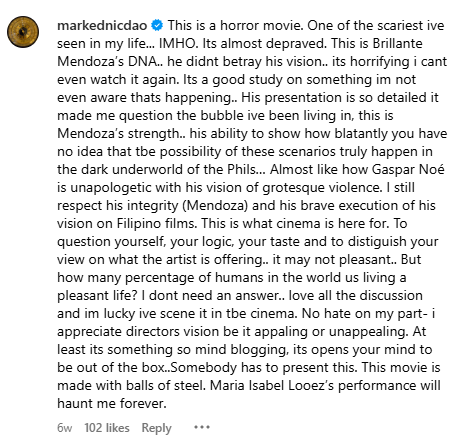Love letters to Philippine history, culture and arts
The Halina Filipiniana newsletter maiden issue
Editor’s Note
Hello fellow Filipiniana fans,
Welcome to the maiden issue of the Halina Filipiniana newsletter!
When I first launched this project (on socials), I shared that my goal was to share “little pieces of the Philippines.” Originally, I wanted to write about topics in the intersection of Philippine history, culture and media. Then it became features on interesting historical facts and recommendations on Philippine films, music, literature and art.
I’ll admit that I am not a historian. I also do not have any academic or artistic background that qualifies me to critic literature, music, film or art. I only enjoy the process of learning more about our rich culture and heritage. I also have a tendency to appreciate little cultural gems that most people take for granted.
I guess, this newsletter/blog is basically just an outlet for that purpose. In a way, it is a personal collection of love letters to Philippine history, culture and arts.
My hope is that by doing this, I’m able to do my small part in preserving and promoting our nation’s historical and cultural heritage.
With that lengthy intro out of the way, enjoy the first issue!
Halina!
-Roi
[🎶 Music] Tagalog version of “La Vie en Rose” ft. Pete Lacaba’s lyrics and a koto + kulintang combo
Édith Piaf’s “La Vie en rose” (Eng trans: “Life in pink") was written in 1945 and released as a single in 1947.
It has been covered by other legendary artists and has been referenced in media plenty of times – by Louis Armstrong, Madonna, Lady Gaga, Thalia, Cristin Milioti and others.
80 years later, its charm has transcended not only space and time but also medium and language.
Even Filipino artists have paid homage to the Piaf signature. No Label, in particular, arranged its Tagalog rendition – lyrics pulled from Pete Lacaba’s Salinawit – with the kulintang and koto as instrumentation.
Julia Yabes played the kulintang, which are metal gong kettles played by striking with wooden beaters. The instrument is commonly used in the Southern Philippines, especially by the Maranao and Maguindanao peoples. Harold Andre played the koto – a traditional Japanese string instrument.
No Label released the cover in 2018, a couple of days before Valentine’s. They credited the season for the crazy project.
“only when we’re in love do we do the craziest things. like play koto and kulintang together, or play the koto without tsume, or play these asian instruments using non-traditional tuning while singing a french song with tagalog lyrics. or is it just us?”
A previous version of this writeup was originally posted on our socials (Instagram, TikTok).
[🎬 Film] Quentin Tarantino defended this "boring" Filipino film against critics and called it "extraordinary"
Kinatay (translation: Butchered) is a 2009 thriller film directed by Brillante Mendoza, starring Coco Martin as a criminology student who inadvertently joins a syndicate and gets involved in the “salvaging” of a prostitute/drug dealer.
While there was no shortage of negative reviews for the film — with popular critic Roger Ebert indirectly stating it as the worst film in Cannes history — Kinatay also received much critical acclaim.
The film was nominated for the Palme d’Or at the 62nd Cannes Film Festival and earned Mendoza the Best Directory trophy.
Paulo Coelho raved about the movie online, tweeting that it was “one of the most disturbing movies” he watched in 2018. He even went on to say that “if it was directed by Tarantino, it would be shortlisted for the Oscar.”
Interestingly, legendary Hollywood director Quentin Tarantino (a fellow contender at the Cannes) also had praises for the movie. In an interview with Metro France, Tarantino said he would “gladly defend” Kinatay, finding it “extraordinary.”
He added, “For a film that puts you in the witness position, I believed it from the beginning to the end, an impression strengthened by the fact that the story is told in real time. The situation is at the same time horrible and ordinary, almost boring. And it is rather crazy that such a thing could be boring! In some aspects, Kinatay reminded me of Outrages, the film of Brian de Palma. We are witnesses of a murder of this prostitute in Manila, a “disposable” being, if we refer to the world she lives in. And the filmmaker [makes] us aware of her humanity, showing her pain. I also adored the flight in the car, in the dark, exciting because we can make out the forms and the sounds.”
A previous version of this writeup was originally posted on our socials (Instagram, TikTok).
Highlighted Community Interactions
Julia Yabes and Harold Andre commenting on our IG post. Please do support them! (And hopefully we do get to see them release more fusion music again soon!)
Direk Phil Giordano and artist/photographer Mark Nicdao commenting on our IG post to share their takes on Kinatay.








That’s generous of Quentin Tarantino to defend the film!